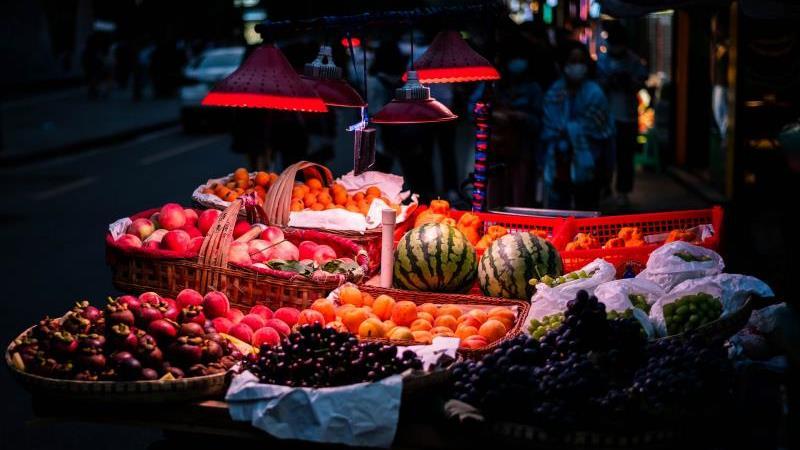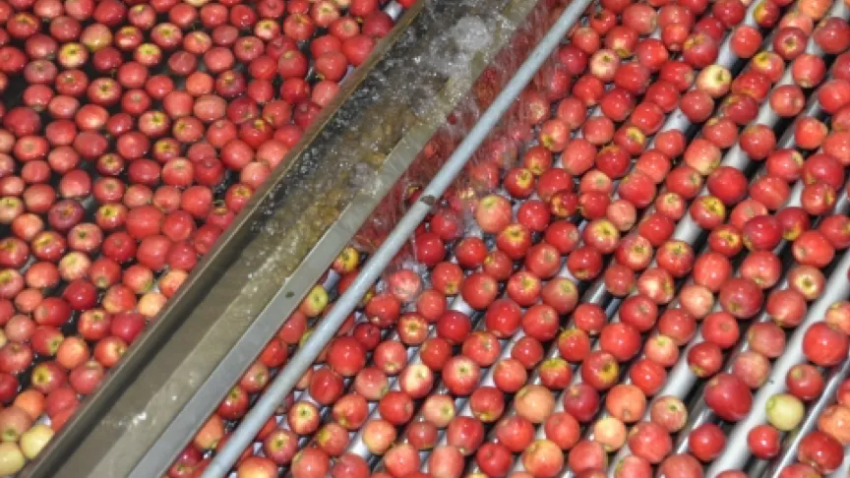You are here
Back to topChina Fresh Fruit Prices Up Nearly 20% as Producers Affected by Rising Costs

A confluence of factors including rising input costs and China’s strict COVID-19 control measures are driving inflation in fresh fruit prices in China. The average price of a basket of six fresh fruit items monitored by China’s Ministry of Agriculture and Rural Affairs hit 6.98 Chinese yuan ($1.03) per kilogram during the one-week period of July 1–7, corresponding to a 19.7% increase over the same period of last year.
The ministry’s basket of six widely consumed fresh fruit items includes both generic species and specific varieties, namely, Chinese white pears (鸭梨), Fuji apples, Kyoho grapes, bananas, pineapples and watermelons — all of which have grown more expensive on average over the past year. Chinese white pear prices rose most sharply, hitting 6.66 yuan ($0.99) per kilogram, a year-on-year increase of 44.8%. Meanwhile, Fuji apple prices rose to 8.19 yuan ($1.21) per kilogram (+29.2% YOY), Kyoho grape prices rose to 12.44 yuan ($1.84) per kilogram (+8.4% YOY), banana prices rose to 6 yuan ($0.89) per kilogram (+26.1% YOY), pineapple prices rose to 5.35 yuan ($0.79) per kilogram (+6.4% YOY) and watermelon prices rose to 3.2 yuan ($0.47) per kilogram (+4.2% YOY).
Other fruits have also seen rising prices in China this year, such as crown pears (皇冠梨), which have become substantially more expensive for both northern and southern production regions. The wholesale price of crown pears is now over 4 yuan ($0.59) per kilogram, considerably higher than the 2 yuan ($0.30) per kilogram or less seen in previous years. In this case, the rise in prices is being driven at least as much by realignment of production to match consumer demands as by inflationary pressures — farmers had previously been growing more of various species of Asian pears than there was market demand for. Now, many farmers have begun replanting their orchards with other types of fruit and volumes have dropped accordingly, prompting a rise in prices. However, increasing labor and transport costs and the impact of COVID-19 restrictions have also contributed to the higher prices.
Watermelon prices rose unexpectedly in July. Normally, with the harvest peaking and more volume on the market, July sees a drop in watermelon prices, especially for particularly large fruits weighing over 7.5 kilograms, and prices below 2 yuan ($0.30) per kilogram are typical. This July, however, watermelon prices increased steadily to reach 3.6–6.0 yuan ($0.53–0.89) per kilogram depending on the variety. Scorching weather across China has also played a role in driving up watermelon prices as consumers seek avenues of relief from the heat.
Prices of early-harvest peaches also hit surprising heights this year, with gate prices ranging from 4 to 6.3 yuan ($0.59–0.93) depending on fruit size, corresponding to an increase of 2 yuan ($0.30) per kilogram from last year. Meanwhile, average retail prices were around 10 yuan ($1.48) per kilogram. Part of the rise in peach prices can be ascribed to a drop in volume due to unfavorable springtime weather conditions in growing areas, which affected fruit set and growth rates.
Nonetheless, in addition to factors like reduced output, the higher prices of fresh fruit in China can also be traced to many of the same rising input and transport costs that have been hitting agricultural producers around the world this year. The price of fertilizers in China is basically double that of last year. In addition, the prices of various other agricultural chemicals such as pesticides have also risen rapidly, increasing production costs for farmers. Behind increases in logistics costs, meanwhile, are both rising fuel costs and China’s COVID-19 restrictions. Transportation costs for fresh fruit have essentially doubled over the past year, while delays and the resulting degradation in quality caused by COVID-19 restrictions have also been a headache for the industry.
Image: Unsplash
This article was translated from Chinese. Read the original article.














Add new comment